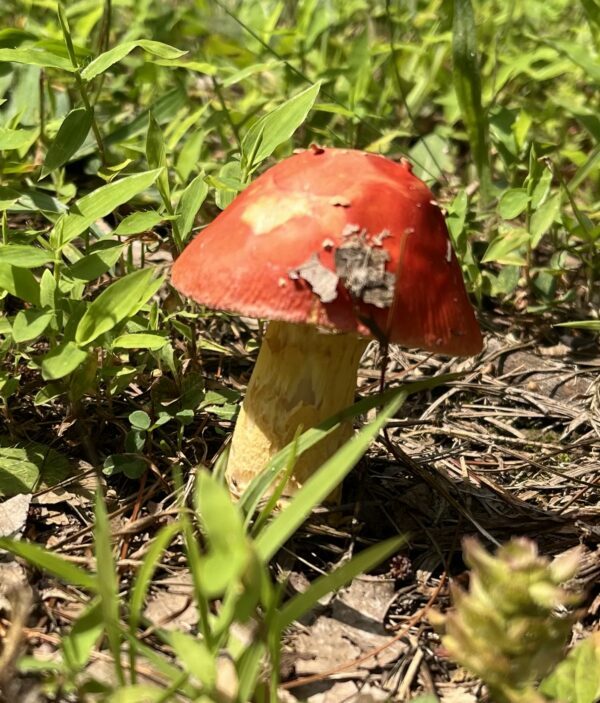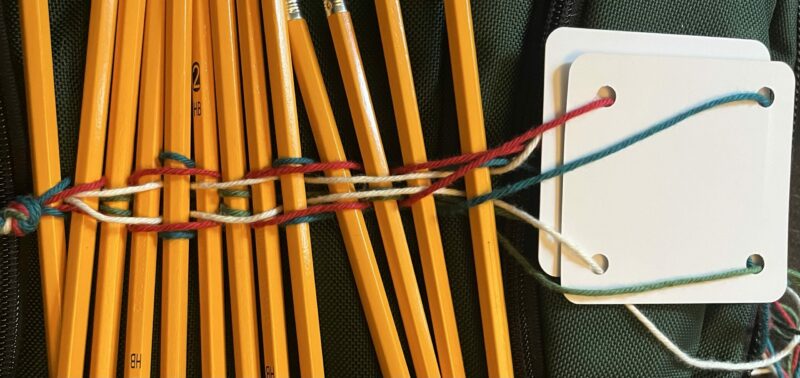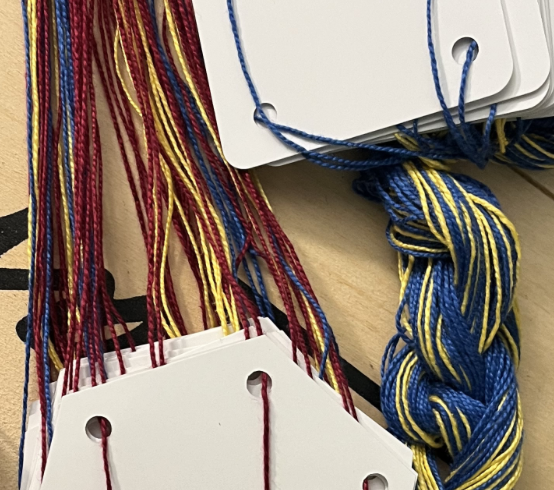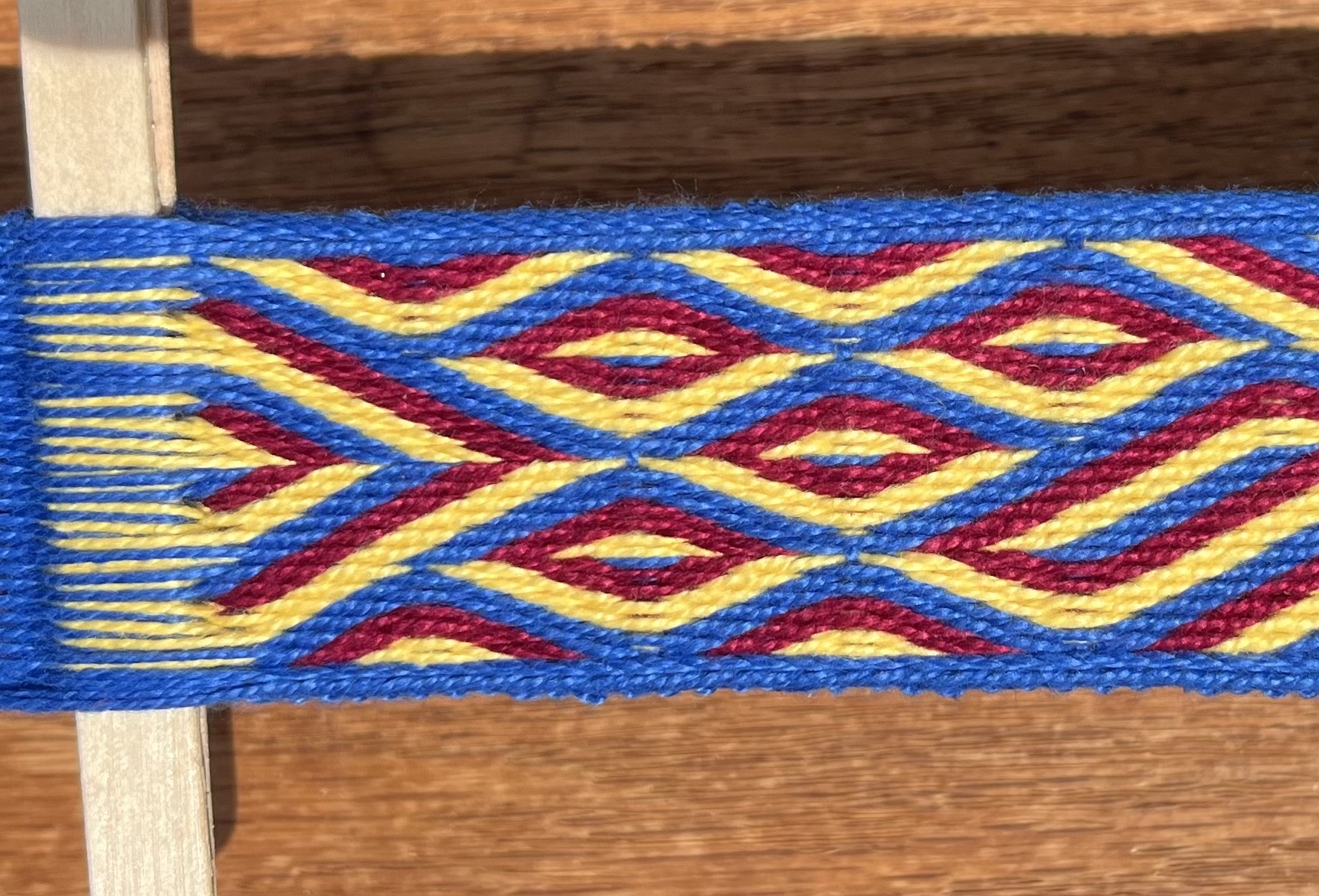Let me preface this by saying that I adore the Yarn Harlot and read her blog and her books. I aspire to some day knit like that (and to have time to do it!) But nobody’s perfect, and when she ventured into the history of naalbinding and knitting in Stephanie Pearl-McPhee Casts Off, she inspired me to expand and elaborate on the little she said. I may not be a master knitter, but I do good research!
This really is a very brief introduction. I only pulled out my favorite textile history book, Margrethe Hald’s Ancient Danish Textiles from Bogs and Burials (Don’t bother, you can’t get it, and if you could you couldn’t afford it – it would take valuable cash away from buying string. I bought this years ago, when it was available, but I’ve probably spent as much on books as most knitter spend on string.)
Textile history is confusing. Even professionals get it wrong, and there are any number of publications (especially old ones) that have trouble distinguishing knitted items from those made using other techniques. To give them credit, if you take a biece of fabric and bury it for a millenium or so, it’s hard to even tell it’s fabric, let alone how it was made. (Note: I’m a purist about terminology – if it isn’t made using two working needles [even with DPNs and circulars you are using two points at a time] and from the bight of the yarn, not the free end, it isn’t truly knitting.) Lots of things can look like knitted fabrics, especially sprang and naalbinding. I’m only going to talk about naalbinding here – sprang is a whole ‘nother beast.
Naalbinding is done with a shorter length of yarn and an eyed needle. The entire working length is pulled through the current stitch – more like sewing without the fabric that like knitting. That means that you have to join a new length of yarn on every so often. With wool yarn (most common historically) you can spin a new length on, making an invisible join, so that isn’t a reliable indicator of how something was made. While this whole process may sound horrible to a modern knitter, it really isn’t that bad – go try it for yourself!
With a single needle you can make something that is indistinguishable from knitting, but it’s more common to see very early pieces that have crossed stitches (I made a lot of those learning to purl). This early pair of socks (Coptic, 3-5th c.) is made up of crossed loops, as you can see in the close-up. See the cute toes? These were made to wear with sandals with a toe-strap. Flip-flops, anyone? Or thongs, or the appropriate phrase for your nationality? There’s another surviving pair with multicolored stripes – very fun. (But look – the V&A calls this knitting, perpetuating the confusion, although they do explain that it was done with a single needle. They should know better!!!!)
I think there is a much, much earlier surviving piece of naalbinding (well BCE), similar to the Coptic socks above, but as I already said, I only pulled out one book.
Hald’s book has really excellent descriptions and diagrams of Scandinavian naalbinding stitches. The cold weather drove them to develop far more elaborate (and warmer and thicker) naalbinding stitches than the simple cross-looping seen in the Egyptian sock. There are many Viking age examples of naalbinding, including a fillet (maybe) worked in gold thread (!) from tenth-century Mammen. Those Vikings liked to be warm.
I’m not going to get into much in the way of true knitting history, at least not tonight. It seems to have started in the Islamic world, and spread north into Spain, and from there into the rest of Europe. It didn’t catch on in Spain until about the 13th c. and in northern Europe until the 15th century or so (er, written from memory, so don’t take this as gospel.) I have a stack of references, and would be happy to pull together more information if anyone is interested. To tide you over, here are some places to look.
My second-favorite textile book, the Crowfoot, Pritchard and Staniland Textiles and Clothing book from the Medieval Finds from Excavations in London series has some medieval knitted bits, mostly from hats. This one, happily, has been reprinted and is easy to acquire (and inexpensive!) and I highly recommend it for anyone interested in textile history. It does only cover London 1150-1450, but does so extremely well.
The recent
Before the Mast: Life and Death Aboard the Mary Rose has knitted scoggers, which are arm warmers, much like leg warmers. I think we should try to start a scoggers craze, don’t you???
Rutt’s A History of Hand Knitting is the standard reference on the subject.
The Victoria and Albert Museum has a portion of their knitting collection available online, with many more neat objects than just the socks linked above. Look how elaborate even the earliest surviving knitting is – like these 16th century silver and silk gloves – I think there’s a lot we don’t know about how this skill developed.






4 responses to “Naalbinding for knitters”
Naalbinding is addictive, and it doesn’t unravel even if the needle falls off. I have been carrying an “emergency string project” of naalbinding around with me for a year or two.
I’m glad I bought my copy of Hald when I did! I saw yours in Las Cruces & knew I needed one badly. :) I have been making sporadic attempts to track down an ?Arabian hat she shows; no luck yet.
–Laura
That’s the Curse of Hald – books full of great information, much of which is impossible or nearly so to track down any further details on.
Sarah needs to write a book, Sarah needs to write a book…
:)
-Nick
Sarah needs to write a book…
I am all about Sarah needs to write a book too. I have been enjoying her webpages on string for several years now.